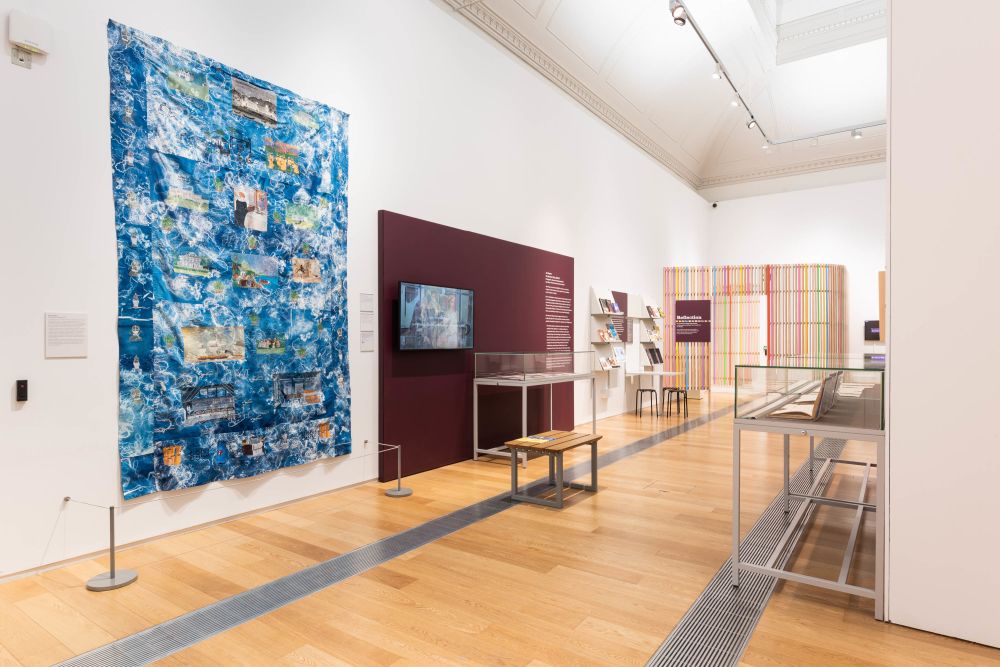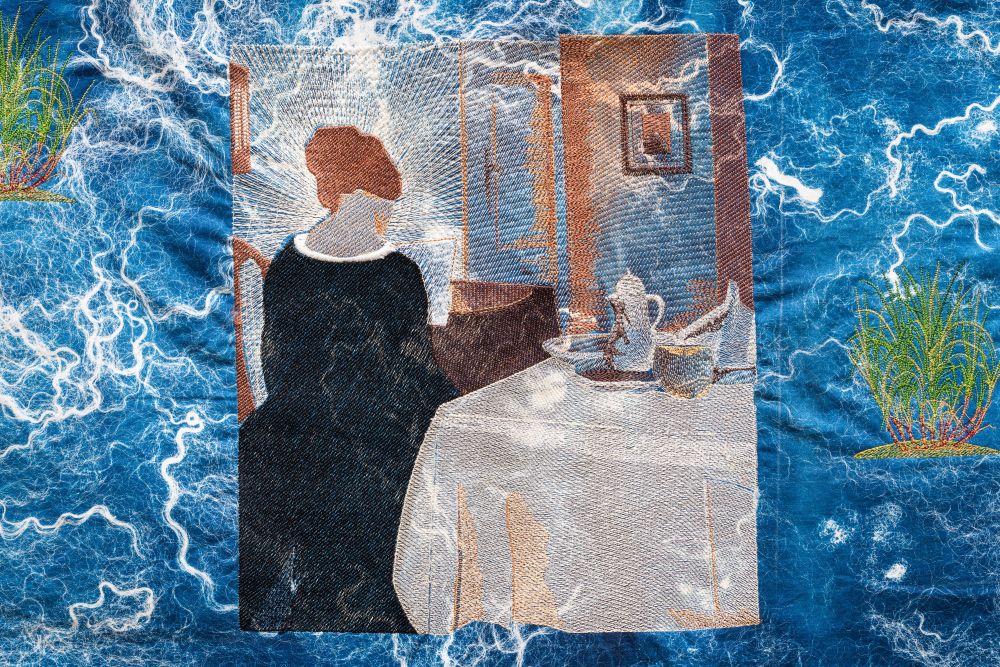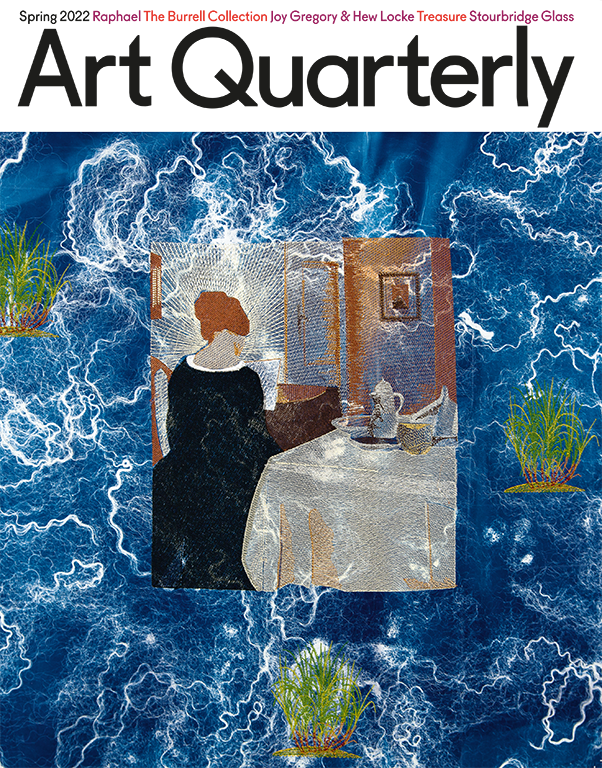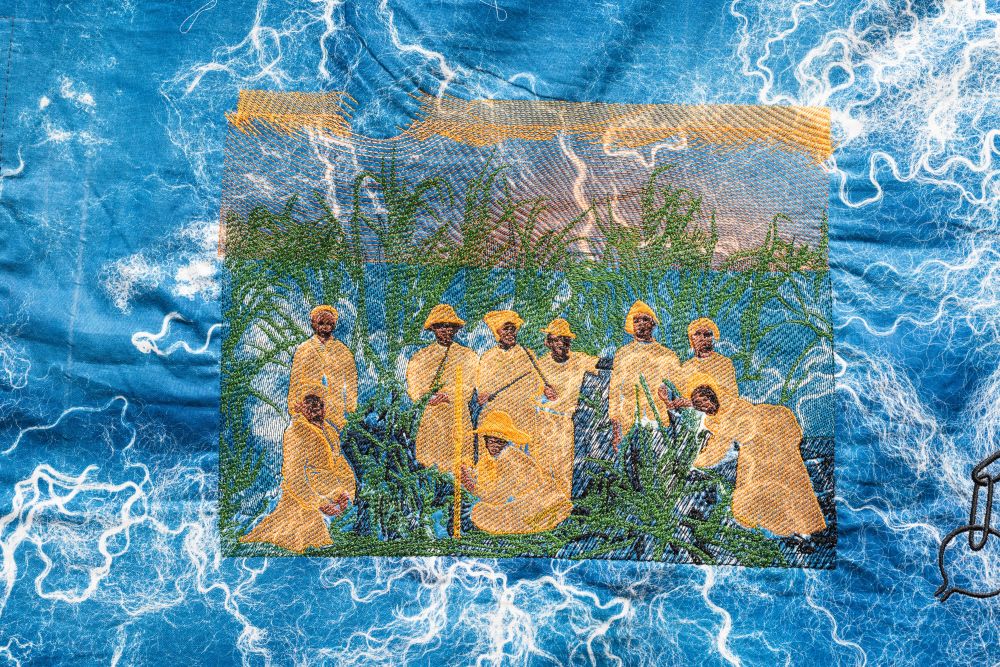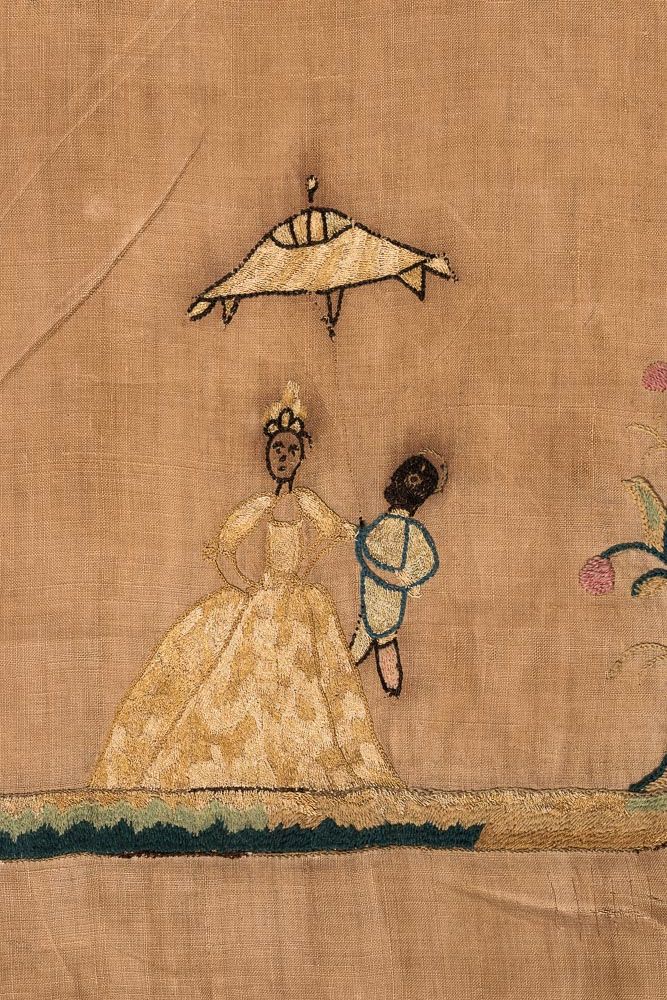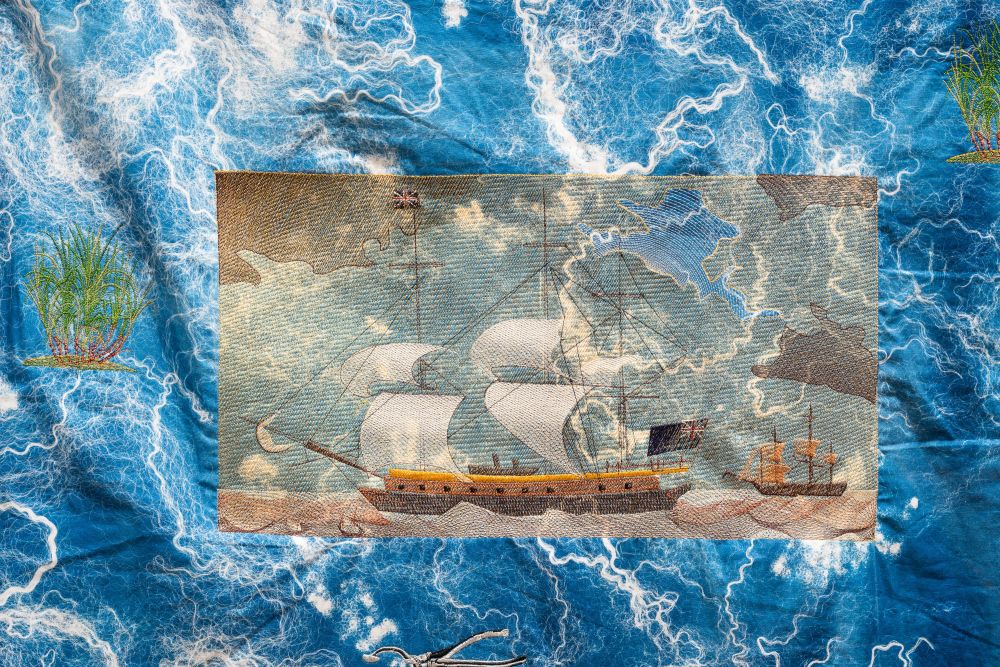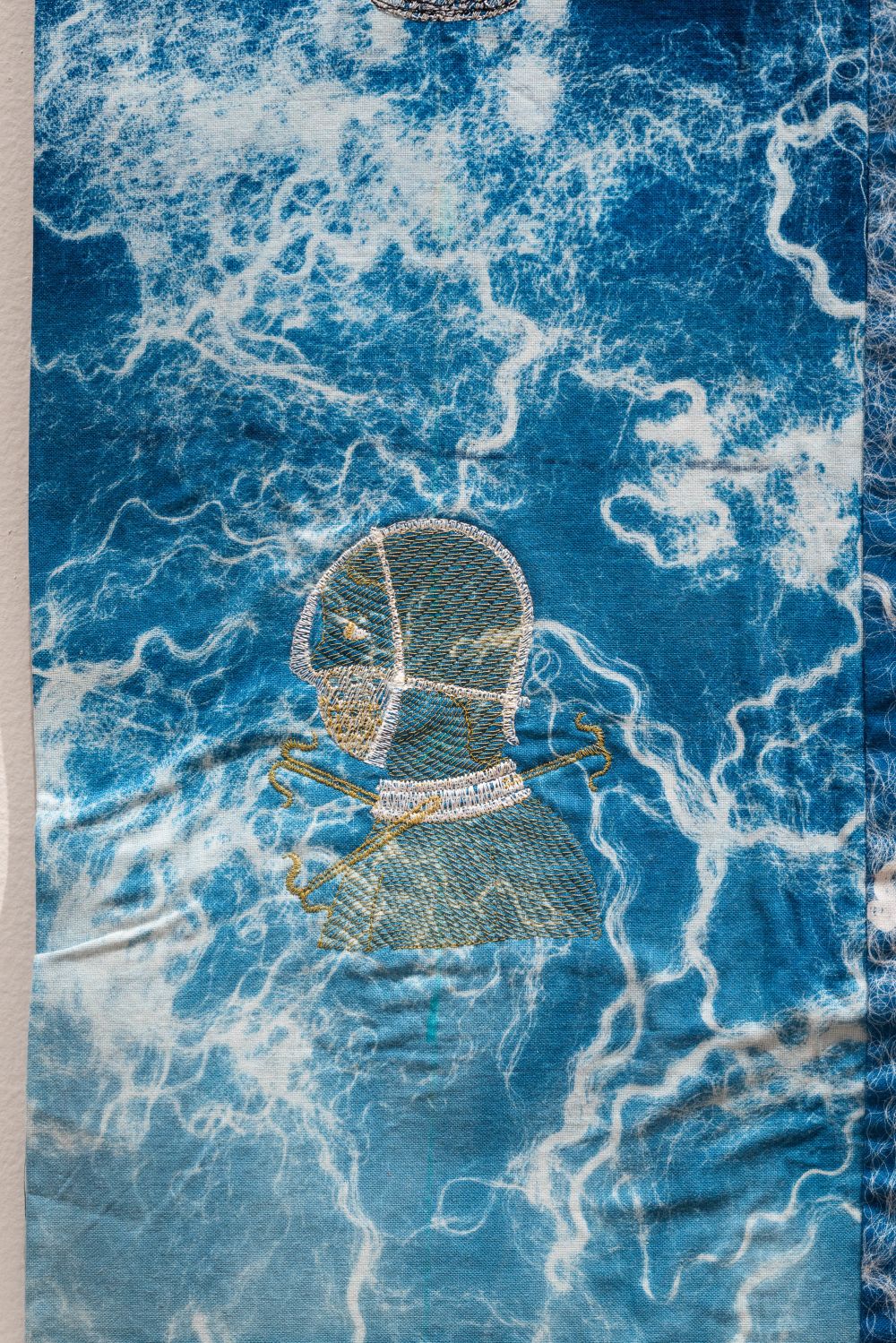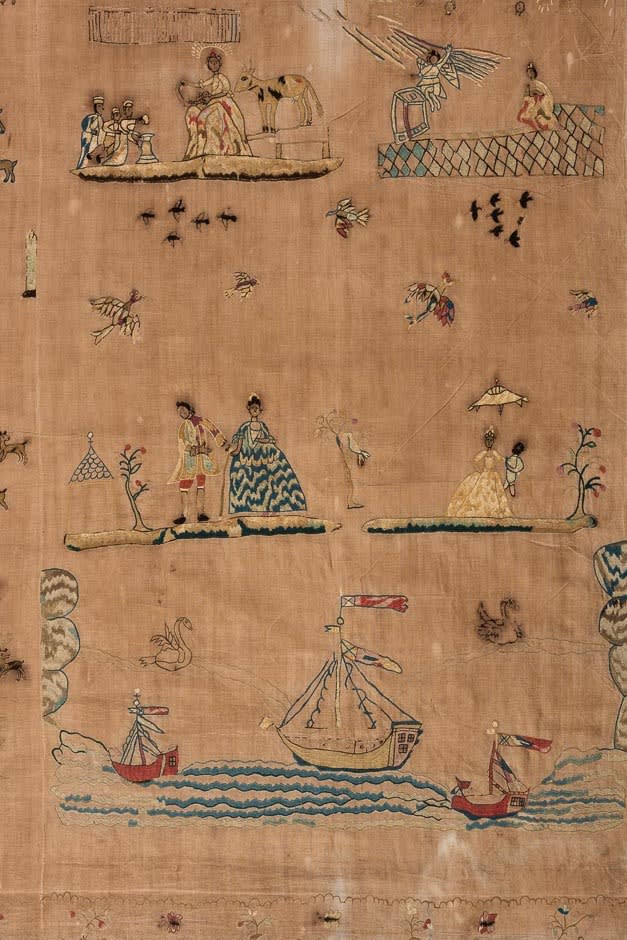
Spotlight: Joy Gregory's The Sweetest Thing
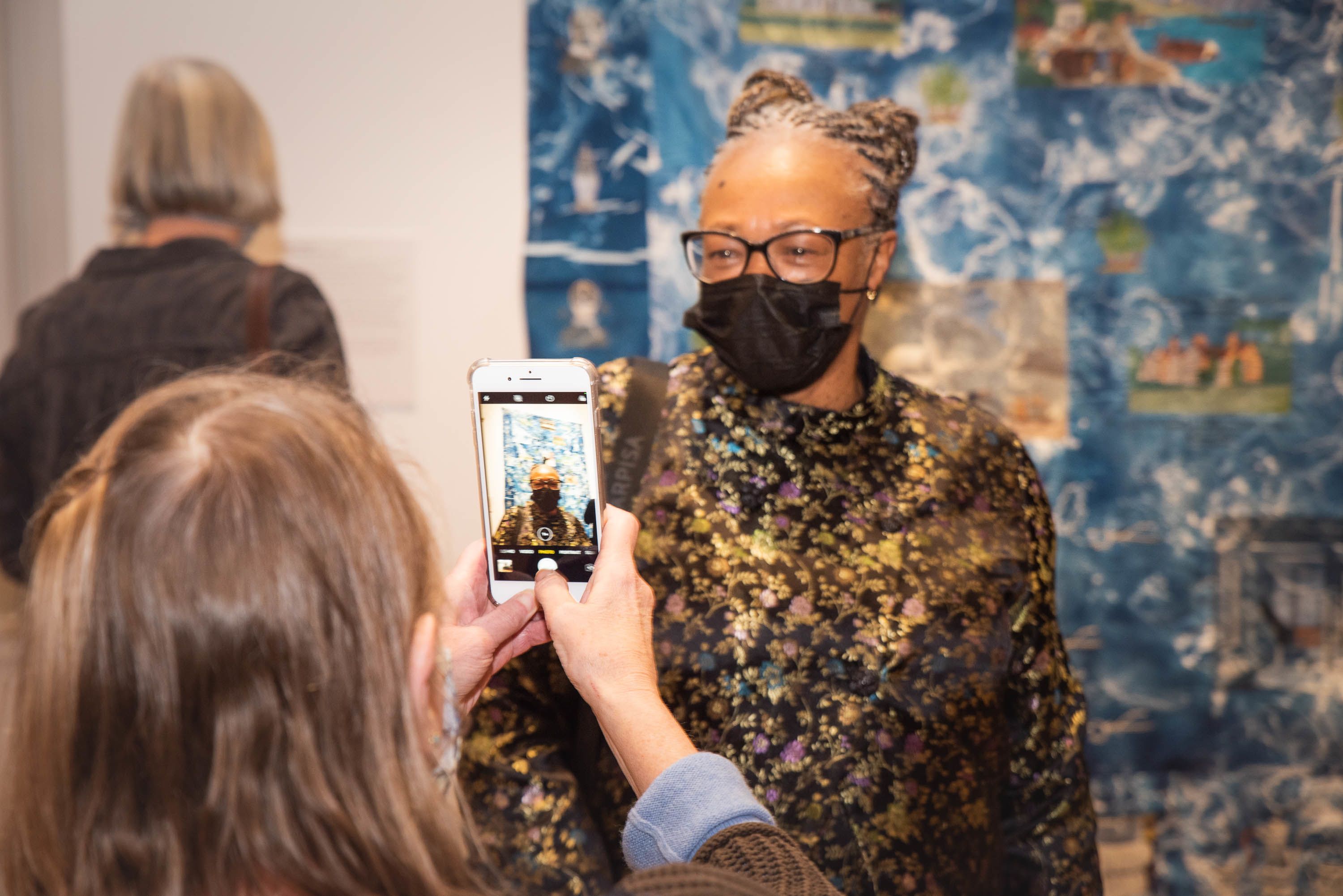
- Written byCat Cooper
- Published date 23 March 2022

Internationally acclaimed British artist and photographer Joy Gregory is an Associate Lecturer (AL) on BA Fine Art: Photography at UAL's Camberwell College of Arts.
If you don’t know Joy or her work, her multi-media portfolio spans digital and analogue photography, video, Victorian printing processes and more recently, her first textile work. Often referencing issues of gender and race, Hundred Heroines recognises Joy as “one of the leading women in photography today”, known for her experimental, interdisciplinary approach. Her work is featured in private and public collections including the Victoria & Albert Museum, Government Art Collection and Institute of Modern Art.
"Shift to the world order"
In 2019 Joy was commissioned by Exeter’s Royal Albert Memorial Museum (RAMM) to make a piece of work in response to their collection as part of a season of ‘Untold Stories’. The season was due to launch in 2020, but it was postponed due to Covid-19.
On what was supposed to be her last research trip to Exeter in March 2020, Joy was introduced to a local Combesatchfield tapestry from the 1760s within RAMM's collection. It illustrates the wealth of the time and place and depicts a little figure of a black boy under a parasol. Seeing this rewired Joy’s planned response to the commission. Its direction and development was to be reinforced and reframed once more by the events of Spring and Summer 2020, with the brutal killing of George Floyd and the cry of Black Lives Matter.

The resulting work: a large textile, a series of photographs and video Joy created for RAMM connects these landmark moments of past to present. A conversation with the original tapestry on display, it tells the story of sugar production and consumption in the 17th and 18th centuries from both sides of the Atlantic. Called The Sweetest Thing, it is a defining work in RAMM’s major 2022 exhibition In Plain Sight, which explores Devon’s links to the transatlantic slave trade.
Colliding the worlds of immense wealth and privilege alongside the trauma and pain of the enslaved on a single plane, it brings together related histories usually separated by selective amnesia.
The Sweetest Thing by Joy Gregory
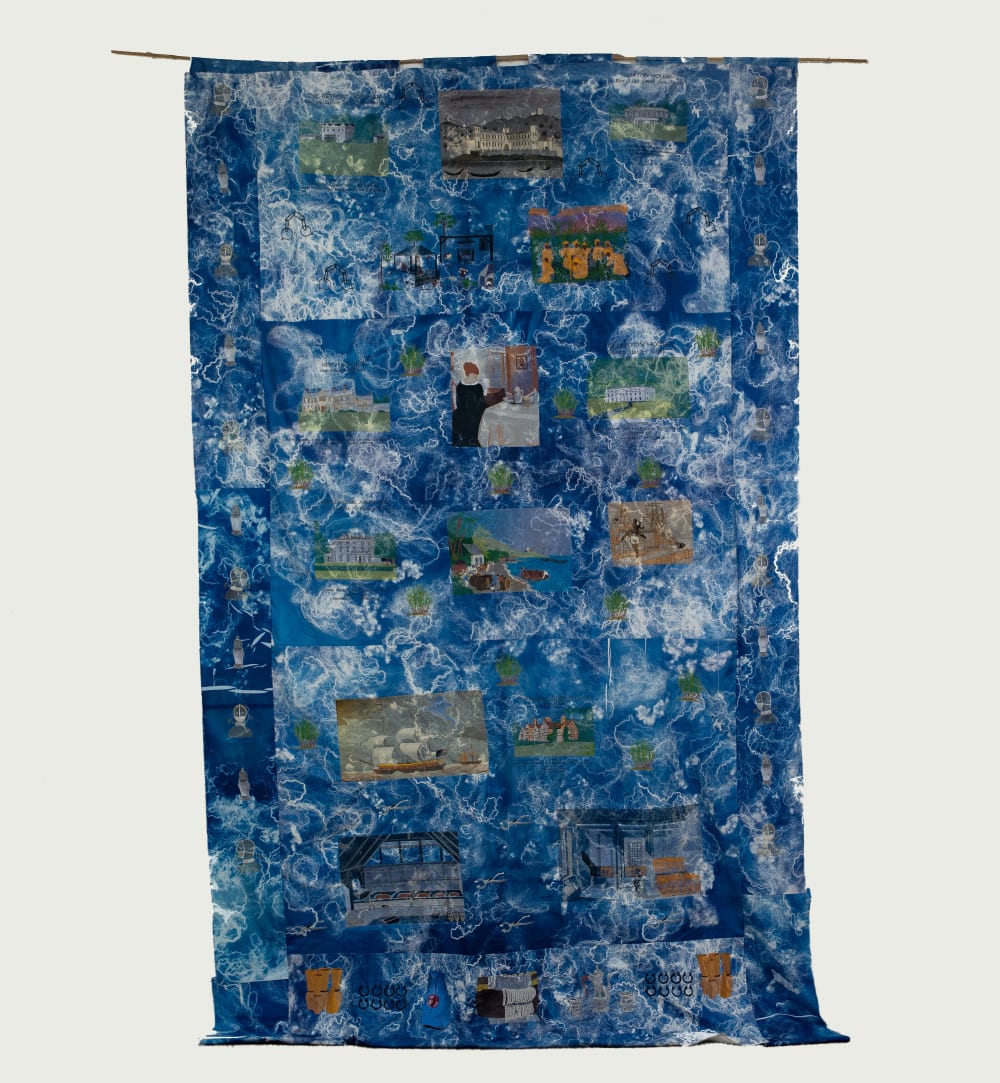
In Plain Sight: Transatlantic Slavery and Devon
Showing at RAMM until 29 May 2022 with Joy’s work at its centre, In Plain Sight investigates aspects of Devon and Exeter’s relationship with the Transatlantic Slave Trade that are all around us, but for some remain ‘hidden in plain sight’.
Using RAMM’s collections and the expertise of many contributors, it aims to shed light on this hidden history. Given its Victorian origins, the museum has had donors and patrons who have documented links with individuals, organisations and families who profited from trafficking enslaved people, as well as collections that contain evidence of the trade and its reach into Devon. The exhibition makes open this knowledge about the region’s history and connections to the transatlantic slavery in the eighteenth and nineteenth centuries.
The exhibition traces the local industries that relied on the trade and the lives of the people who benefitted from its profits. It also features a newly commissioned film which reflects on RAMM’s iconic painting ‘Portrait of an African’ - once believed to portray abolitionist Olaudah Equiano or composer, actor and writer Ignatius Sancho - but whose identity remains unverified.
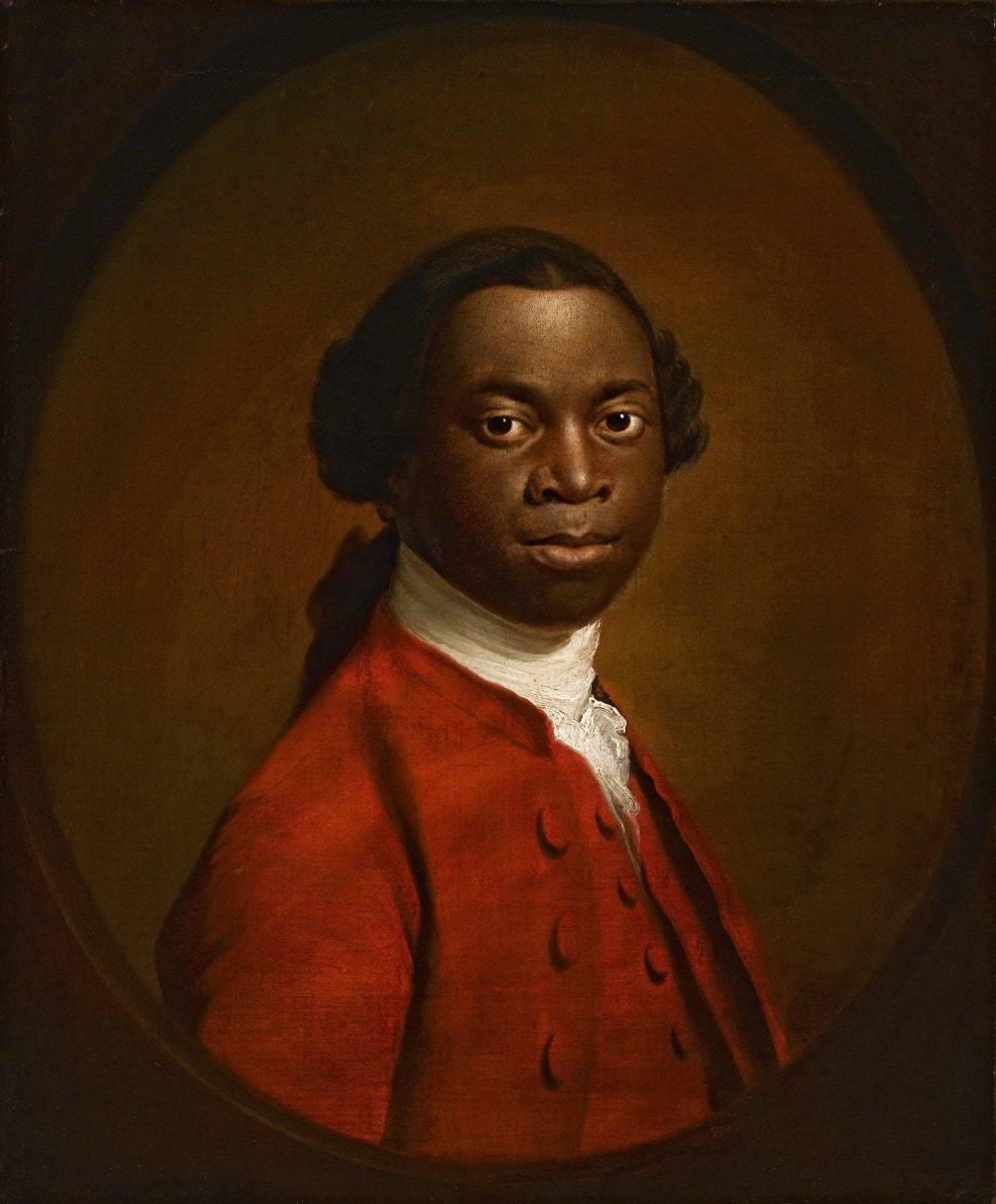
Decolonisation and inclusion in the classroom
On the BA Photography at Camberwell, Joy’s students cultivate an environment of debate and discussion that challenges traditional ways of seeing - and they actively respond to her decolonised approach to teaching and practice founded from her experiences as an individual and artist.
Earlier this month Joy led a lecture specifically focused on decolonising the arts, and throughout the year they have long discussions connecting film to current and historical events and history of nation with specific reference to artists and practices considered to be “othered”. They consider different colonised spaces, looking globally as well as from the perspective of the UK.
Her experience is that students who feel under-represented across a range of identities gravitate to her, perhaps implicitly knowing that she will relate to their experiences of under-representation and feelings of exclusion.
Where to see more of Joy
You can see The Sweetest Thing at RAMM as part of In Plain Sight, until 29 May. Joy is also showing works across a number of other UK exhibitions: Life Between Islands at Tate Britain; Generations: Portraits of Holocaust Survivors at Imperial War Museum; Care | Contagion | Community - Self & Other at Autograph; and 'In-Process' - FIX Photographic Collective at the Glasgow Art Club.
Joy was a recent guest on Part 4 of the Decolonising Lens led by Professor Mark Sealy OBE and UAL's Photography and the Archive Research Centre (PARC), discussing issues of representation, race and gender through the lens of her multifaceted practice.
With Joy’s work on the front cover, the Spring edition of Art Quarterly features Joy and fellow artist Hew Locke in conversation with editor Helen Sumpter. They discuss history and their experiences of the Caribbean; and how the seaside towns of Devon and Cornwall have influenced their work.
And you can spy Joy on the wall of fellow artist and UAL Associate lecturer Michael McMillan’s The Front Room in 1970, a permanent exhibition at the Museum of the Home in Hackney.
